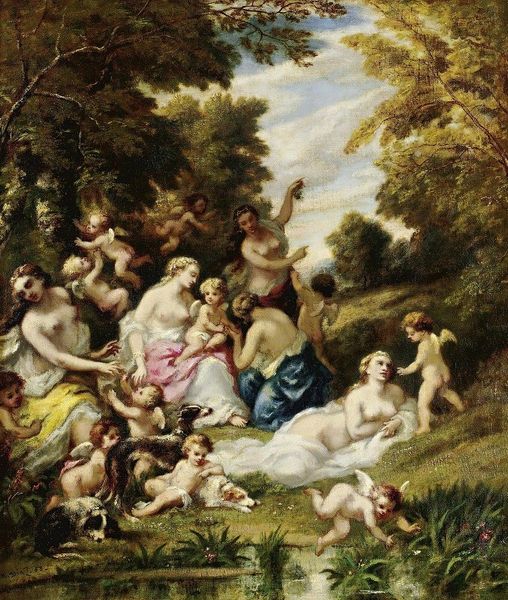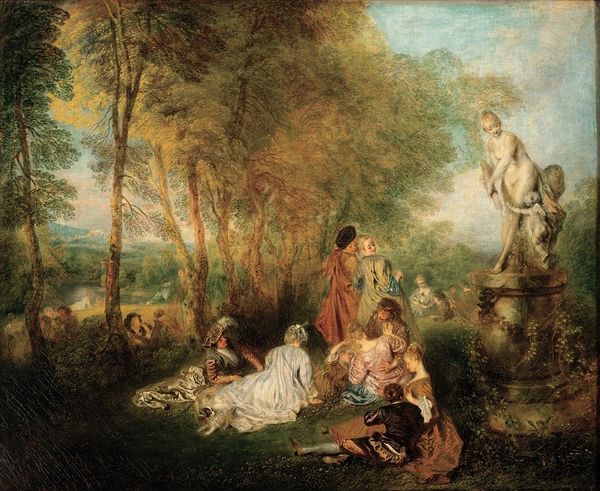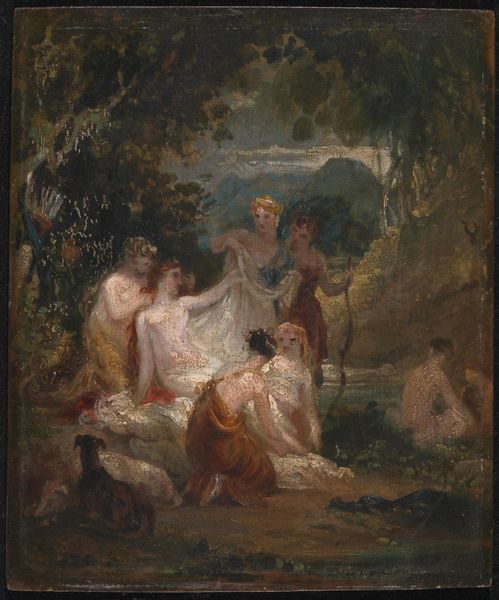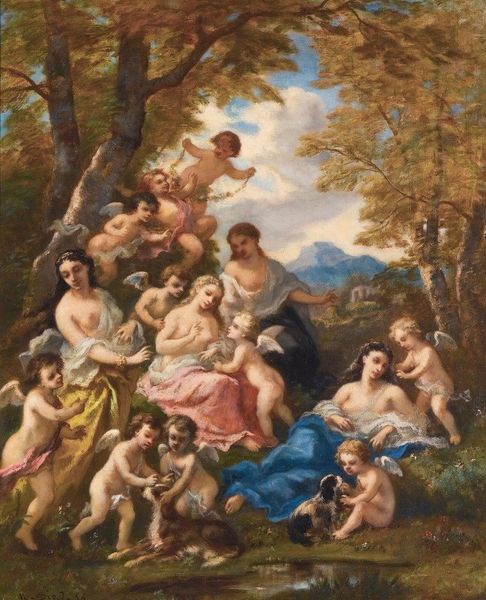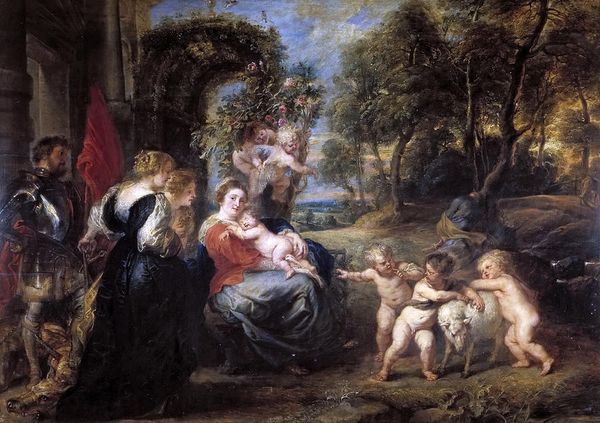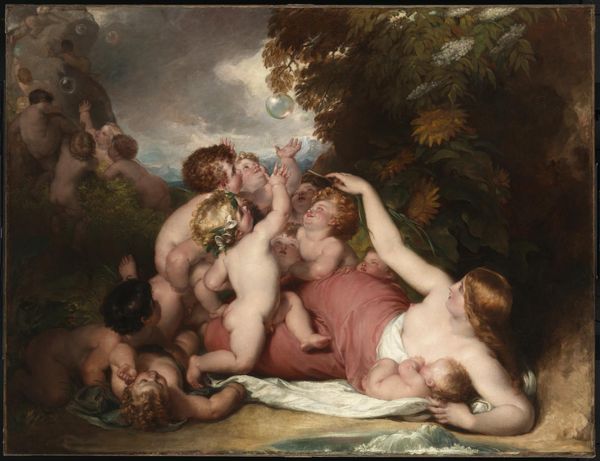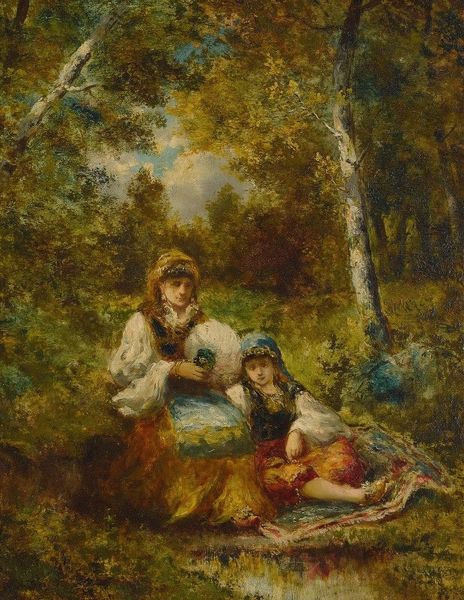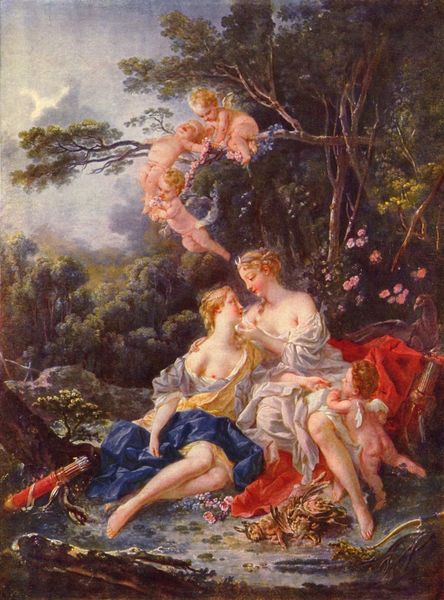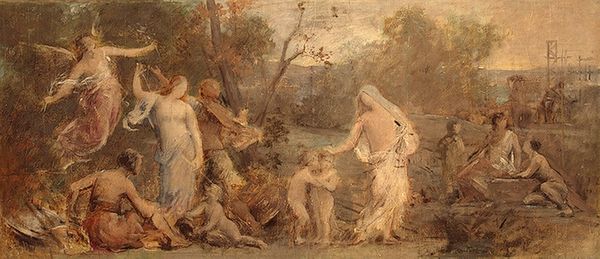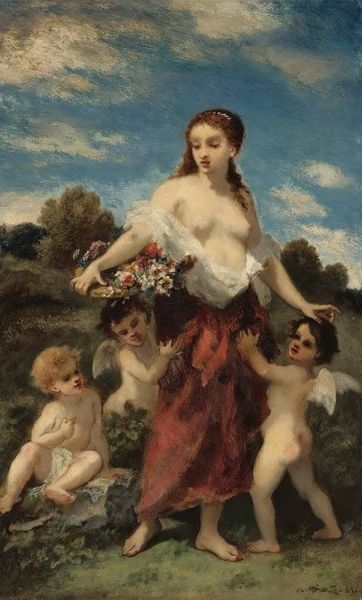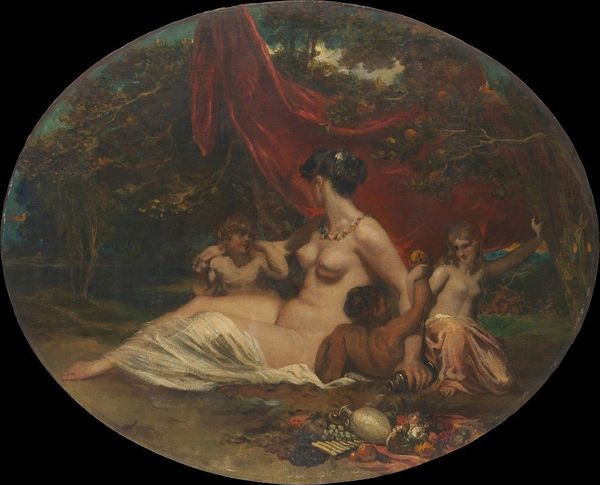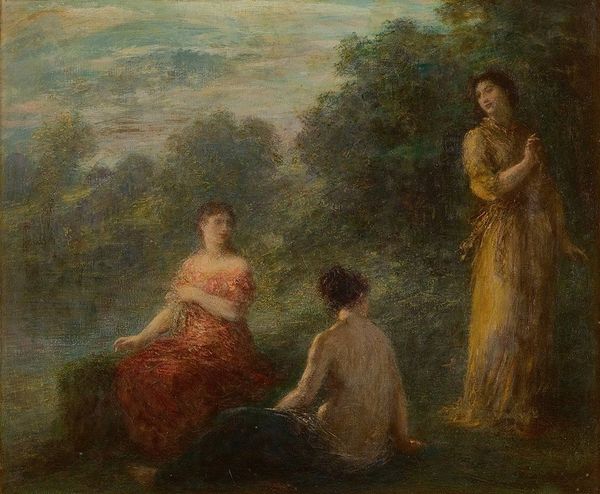
Copyright: Public Domain: Artvee
Editor: This is Narcisse Virgilio Diaz's "Les Hamadryades," painted in 1865 using oil. There’s such a dreamy, almost ethereal quality to it. What can you tell me about the cultural context surrounding its creation? Curator: It's interesting that you describe it as ethereal. Diaz, a key figure of the Barbizon School, painted during a time when artists sought refuge from industrializing cities, romanticizing nature. But nature here isn't simply observed. How do these figures – the Hamadryades, or tree nymphs – influence your understanding of the landscape? Editor: They add this mythological layer; it's like the landscape is personified, or even populated by a different species altogether. So, it isn’t *just* landscape. It feels symbolic…like a commentary? Curator: Precisely. Think about the socio-political climate. The Second Empire was a period of considerable social and political change in France. Consider how mythological and allegorical paintings like this served a public role, reaffirming certain values or providing escapism from contemporary realities. Notice also the female nudes - how were paintings such as this exhibited, and who had access to seeing them? Editor: So, these nymphs are almost like a deliberate…ideal, removed from the messy industrial world but maybe even removed from normal life? Curator: Yes, it allowed for artists and their audiences to engage with concepts of beauty, nature, and classical ideals while also, perhaps subconsciously or not, engaging with the realities – or escaping from them – of the time. To consider its purpose during exhibition and viewing in that period further frames its impact on culture and ideals. Does it shift your interpretation at all? Editor: Definitely. Knowing about the context of the Second Empire adds another dimension. It makes me think about art's function, and its connection to everything around it. Thank you. Curator: It highlights the point that artistic movements aren't isolated; rather, art always is an intrinsic element of history and reflects the current context and society.
Comments
No comments
Be the first to comment and join the conversation on the ultimate creative platform.
